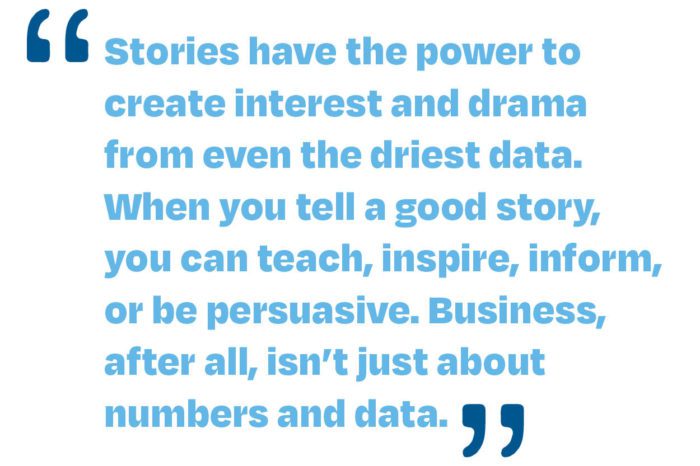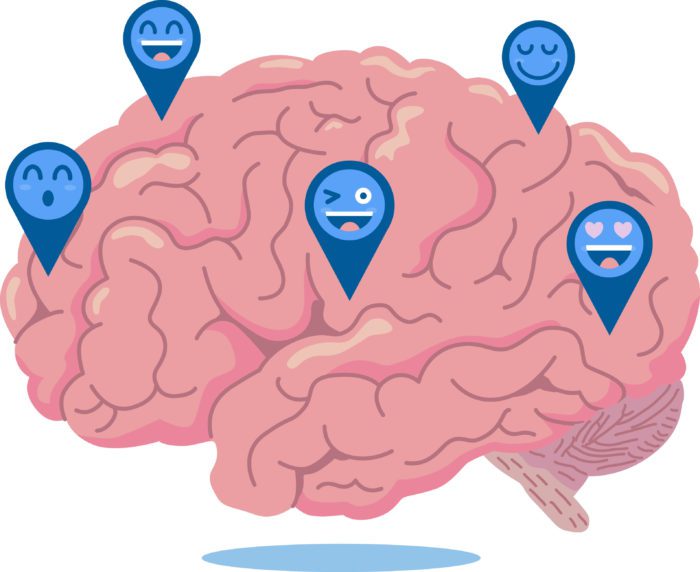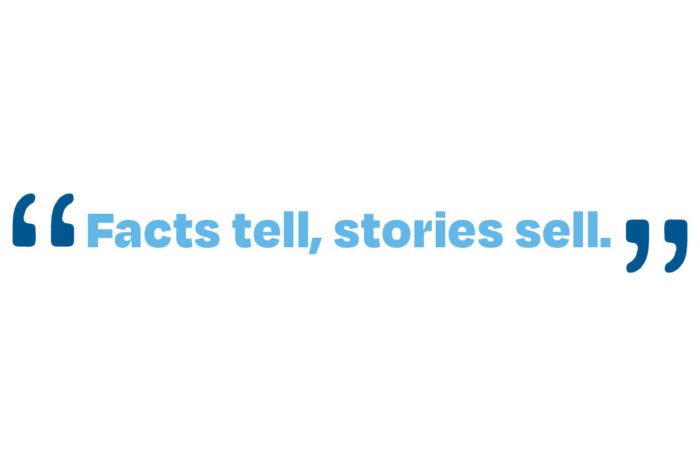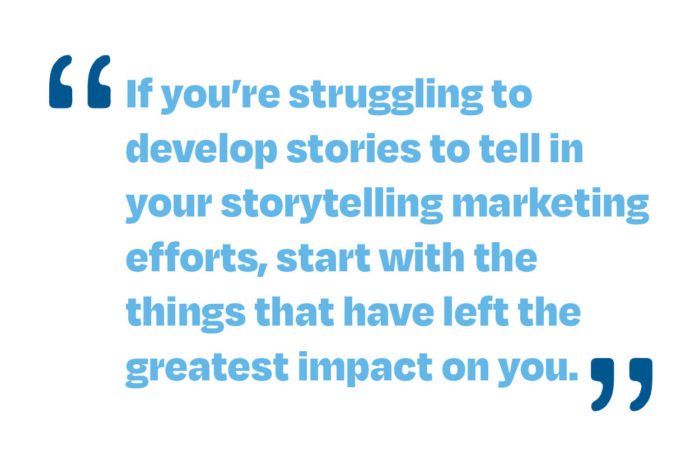In 2006, Dove marketing director Stacie Bright found herself in a moral dilemma. Dove’s beauty products featured superficially “beautiful” models to sell their products. This was an age-old tactic meant to establish brand loyalty. But when she learned that their marketing was affecting her daughter’s self-esteem, she knew something needed to change. “If it’s affecting my daughter’s self-esteem,” she thought, “it must affect everybody’s daughter subjected to the advertising.”

Bright used this realization to put together an advertising campaign. The campaign used pictures of the company director’s own daughters, with text next to each image that stated why each girl believed they weren’t beautiful. “Wishes she were blonde,” one message read next to a picture of the executive’s young, dark-haired daughter. Each picture was a personal story.
Bright and her team knew it was a risky move. But Dove executives were deeply affected by the pitch and gave her their resounding approval. Dove subsequently overhauled its marketing strategy.
Storytelling In Marketing And Entrepreneurship Efforts Is A Window, Not A Tactic
This story is effective because it’s not about increased sales or business strategy — it’s about people. While marketers may tell stories to sell their products or services, the overarching purpose is to create understanding and relate to your audience. It’s a window into the inner workings of what drives your company.
Stories aren’t a dry data dump. They’re a way to present information so that everyone takes genuine interest. In this case, Bright built a story out of her own personal experience, connecting a meaningful message directly to the Dove brand.
By encapsulating a struggle that Dove’s audience could universally relate to, she created a connection with them and set the stage for brand loyalty to grow.
Establishing Brand Loyalty
People do business with people they know, trust, and like. So how do you get customers to know you — and, better yet, actually like you?
Business communications expert Patricia Fripp shared her thoughts on how storytelling can help: “Stories have the power to create interest and drama from even the driest data. When you tell a good story, you can teach, inspire, inform, or be persuasive. Business, after all, isn’t just about numbers and data.”

Instead of a bedtime story to help your audience fall asleep, give them an engaging story to bring them closer to your company. After all, the best way to build brand loyalty in your customers is to make them legitimately care about your business.
Creating A Relationship
Stories are an incredible relationship-building piece. They convey your personality and allow your audience to see you as more human.
Bright told a meaningful story about her daughter and about true beauty. By opening up her family to the world, she created a greater understanding of this mutual struggle, which resonated with millions. She didn’t do this to solely establish brand loyalty. Instead, she set out to create a connection. The important fact that beauty is not related to body image created a foundational bonding point for many consumers to relate to the company. When you strike a relationship, brand loyalty naturally follows.
Social Media As An Avenue To Find What’s Relatable
We’re now almost 2 decades removed from this campaign, and we’re still seeing its impact on today’s market. Other brands and companies saw the positive response that Dove gained by changing their marketing and advertising approach. While the traditional “beautiful” models are still utilized, many businesses like Aerie, Old Navy, and Target have started to use models that resemble “real women” in their campaigns. It’s not about encouraging young girls and women to try to resemble the “beautiful” models, but instead is telling them that it’s okay to be comfortable in their own skin. This strategy helps improve customers’ mental health while informing them that this business is welcoming to people of all body types and sizes. And it all started by crafting a relatable story and plugging it into a marketing campaign.

This is something that every business can capitalize on, but it starts by understanding what your customers want from your business. What kind of stories do your customers want to hear? What do they actually relate to? These are questions you need to ask yourself, and it will take some in-depth research to discover the correct answers. This provides a great opportunity to head to social media and see what people are saying about your brand.
How you look through your social media is going to depend on the size and scope of your business. A businessperson who just started on their entrepreneurial journey will not have the same following as a company that’s been around for decades. If your business is relatively new, look through your follower list and see what your customers or clients have in common, then develop theories for why they relate to your brand. If your company is more well-known, you can search it on various social media platforms and see what people are directly saying about your business.
Craft a story around your findings after you discover a common thread among your customers. What is the reason they’re using your product or service, and what differentiates you from the competition? Once you figure this out and place it into a comprehendible and relatable story, your customers will be drawn in. Making a story that’s relatable for everyone is impossible, but through trial and error, you can find new ways to connect with your clientele.
How Storytelling Affects The Brain
Perhaps the greatest value in storytelling is how it engages your audience’s brain. Stories demand an emotional investment, which piques and holds the interest of the brain.

When the brain experiences an emotional reaction to what it reads, it releases dopamine. Dopamine exponentially increases the consumer’s ability to remember the experience. This process, called neural coupling, engages much more of the brain than traditional marketing techniques. It creates an unparalleled experience for the consumer.
Think about the last time a marketing campaign left an impact on you. Did they tell a story to draw you in, or did they provide statistics that made you think better of the company? Chances are, you heard an amazing story or found something to relate to. Many businesses make the mistake of talking about important metrics and boasting about them through their marketing efforts. If you inform people that your business was voted best in town or that your customer service numbers are exponentially higher than the competition, customers will likely say, “That’s neat,” before carrying on with whatever else they were doing. But when you create a story, it grips their attention, just as if they were reading a book. They’ll generate feelings tied to your storytelling that will work on a conscious and subconscious level.
Storytelling Can Increase Revenue
“Facts tell, stories sell,” says marketing guru Bryan Eisenberg. Bright’s story is impactful in its own right, but we’d be remiss if we didn’t point out that Dove’s profits doubled from $1 billion to $2 billion since they adopted the campaign. This is because you engage a much wider audience by telling a story, rather than just presenting facts.

Stories put their audience at ease and engage them with the human side of the brand. This creates brand loyalty, which can alter behavior, change lives, and drive consumers to spend. The right narrative can increase the value of your business’s products by over 20 times.
For a great example, look at Nike’s “Just Do It” campaign. This campaign started with one story of an older man named Walt running across the Brooklyn Bridge. The story behind the campaign is that anyone can play any sport or perform any physical action — they just have to do it. That story grew into a slogan that became bigger than life itself. Now, everyone has heard the phrase “Just Do It,” and Nike even prints the slogan on its clothes to bring in additional profit.
Money talks, and that money says storytelling is powerful — and so is paying attention to your audience’s emotions and reactions to your advertising. When done right, incorporating evocative, personal stories into your marketing campaigns will bring a boost to your business.
Your Brand Is The Best Story To Tell
No matter what industry your company is in, there are stories to be told and people to engage.
Start with something simple, then gradually build to a meaningful story that will impact your audience, create a lasting impression, and make your brand as relatable as it is recognizable. You’ll find an increase in brand loyalty and relationship building that goes deeper than the surface.
If you’re struggling to develop stories to tell in your storytelling marketing efforts, start with the things that have left the greatest impact on you. You never truly know what people are going to connect with, but there are common shared experiences that many will relate to. Think about stories like how you met your significant other or why your kids participated in a certain activity and find ways to tie in your products, services, or professional experiences. You should even think about how you started your brand and why. When you discover that common thread that links part of your story of your products to what other people feel or have experienced, you’ll find the sweet spot of storytelling marketing.

People will almost always respond to your stories better than they would to random statistics. Statistics might prove a point, but they don’t necessarily entice customers to walk through a business’s doors. Great owners and entrepreneurs do that through amazing storytelling and connecting with customers.
We harness this power with our clients each month, encouraging them to share personal stories and experiences in their monthly newsletter rather than pushing products or services. We do that because it works! Tell your stories and let the relationships that follow do the heavy lifting for building your business.
To learn more about storytelling and the content that drives it, you can fill out the form below to request your free copy of our founder’s book, The Ultimate Guide to Newsletters.






